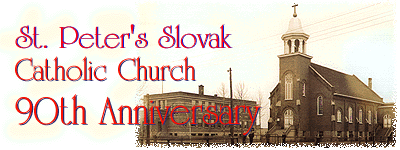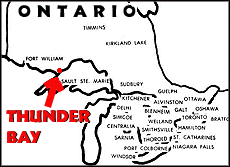|
was erected in the 1700s and for many years, Fort William was the site of the annual rendezvous at which furs were traded for supplies. Eventually, the forts closed down and the land fell to the Canadian Pacific Railway and Fort William developed into an important town for the shipment of grain and coal from ships to rail. Immigrants willing to provide the hard labour for these jobs flocked to the town and settled in the neighbourhood which was building up next to the railyards and James Murphy coal dock. Ukrainian, Italian, Polish, Syrian and Slovak peoples made up the majority of the immigrants living on streets named McIntosh, McTavish and McLaughlin after the scions of the fur trading trade. As soon as they came to Canada, the Slovaks looked for a spiritual home. According to oral history, Masses were sometimes held by a Syrian priest in one of the neighbourhood stores. |
|


